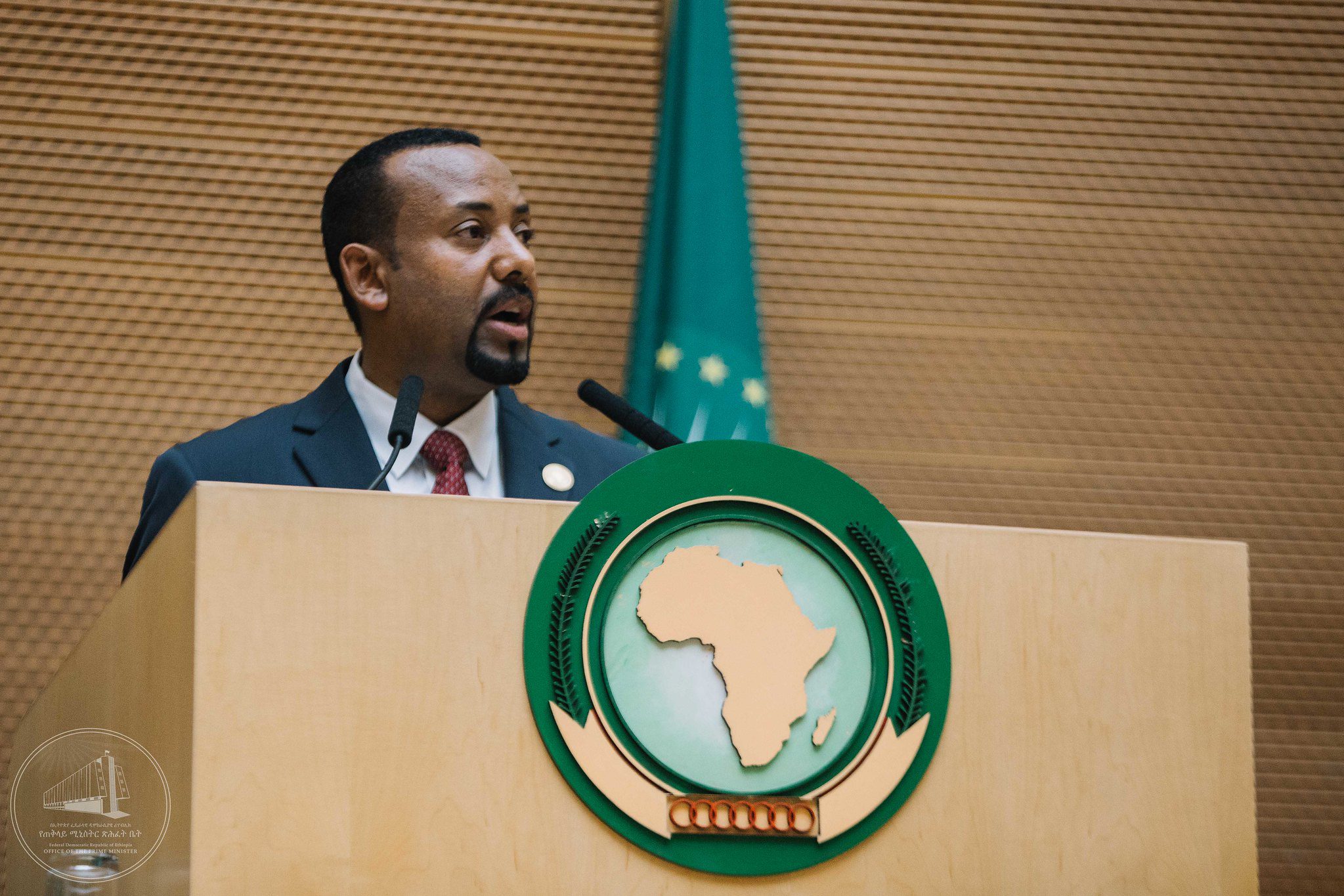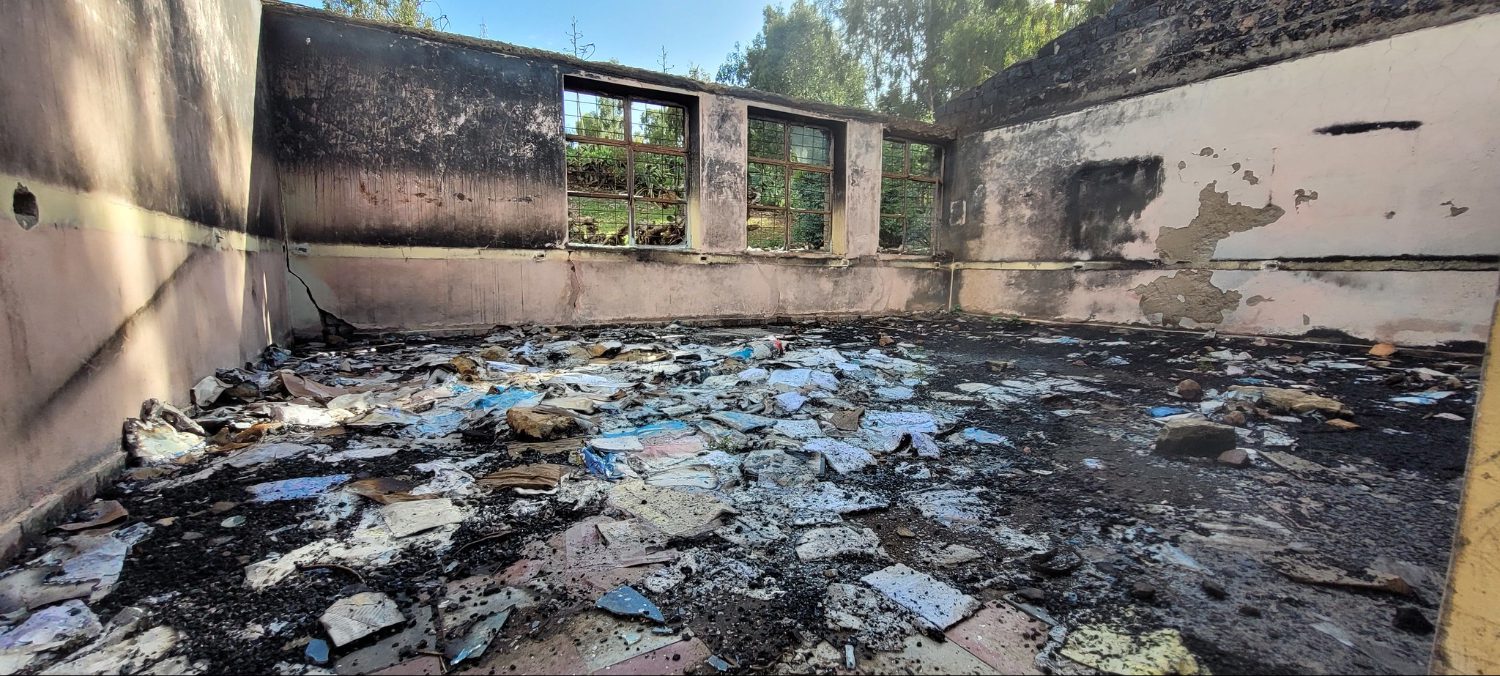In Shakespeare’s play, as the usurper king Macbeth leads his reluctant army towards their final defeat, one of the opposing lords comments:
Now does he feel his title
Hang loose about him, like a giant’s robe
Upon a dwarfish thief.
The Ethiopian state today resembles the character of its prime minister. Abiy Ahmed poses as a ‘big man’ and runs his government, and the country, accordingly. But the country has been reduced to the size of his grandiosity. Other members of the political elite—friends, rivals, clients, foes—all look like the prime minister, parading on the stage in robes far too big for him.
Four questions arise. One: how did Ethiopia come to select a man such as this as its ruler?
The answer to this lies in the weakness and decay of the previous system. We have outlined how and why the centralized public service monopoly of the former government, the Ethiopian People’s Revolutionary Democratic Front, degenerated into ‘big man politics’ in an occasional paper for PeaceRep.
Two: how did Ethiopians and the international community fall for someone so manifestly unsuited to lead the country?
The answer to this among other things lies in media and communication. There was a lot of wishful thinking in Ethiopia and internationally, and Abiy ably played on that. Instead of the deliberative, ponderous, secretive, even constipated communications of the previous regime, Abiy embraced the style of a charismatic preacher and social media influencer. The former Prime Minister, Meles Zenawi, had no cult of personality—quite the opposite. Abiy’s personality is larger than life.
The bulk of Abiy’s initial support also emanated from his anti-EPRDF rhetoric rather than any expressed policies of his government. Abiy also played on the Ethiopian tradition of reverence to the ruler. He was taken at his word.
Three: how did the institutions collapse so precipitously and so completely?
It turned out that Ethiopia’s governing institutions were far more fragile than we had thought. Only a few of Ethiopia’s institutions did have a strong tradition: the army, the finance ministry, and the foreign ministry. Abiy destroyed the army as a professional institution because of the Tigrayan identity of so many of its senior officers. Remarkably, he was able to mobilize vast armies to fight, but their victories were won through sheer scale. He kept the finance ministry functional even while working around it as much as he could, for example in acquiring armaments and paying for his vanity projects. He dismantled the foreign ministry in favor of what he called the ‘twitter lions.’
The other institutions were all flimsy, created only over the previous 25 years. The EPRDF party, regional governments, the judiciary, the electoral system—all turned out to be shaky.
Four, how did others come to resemble Abiy?
The political elite in Ethiopia, in government and opposition, remains dominated by former senior cadres of the EPRDF. Fifteen years ago, they were all committed to an institutionalized, developmental state that pursued national objectives in a strategic manner. But were they strategists? Or were they just singing PM Meles’s song? Today, do any of them—in Tigray, in Oromia, in Amhara—show any capacity for deliberating and acting strategically? It appears not. They have descended to the same level of charlatanry.
Most strikingly this is true in Tigray, where we could have expected the traditions of the EPRDF to have been most deeply entrenched. Immediately after the death of Meles, the TPLF leaders came out publicly declaring that Meles had left them a policy package for upcoming thirty years and all they needed was to build implementation capacity. Furthermore, the preoccupation of these leaders following the death of PM Meles was in-fighting for dominance among themselves and their coalition partners rather than addressing the limitations of the regime by building on the strengths of its policies and processes. The leadership lost out in this in-fighting to a coalition of their Amhara and Oromo former comrades and failed to strategize properly for conflict between Tigray and the federal government. When the war broke out, the resistance of the Tigrayans was saved by the resilience of the people of Tigray but the leaders of the TPLF failed to make the strategic decision for a negotiated settlement when the time was ripe. When they finally did make a peace deal, in Pretoria in November 2022, they then failed to lead their region towards peace and reconstruction. Two and a half years on, more than a million Tigrayans are still in IDP and refugee camps and approximately 40% of its land area is still under the occupation of non-Tigrayan and foreign forces while the TPLF leaders are busy with internal fighting for control and dominance.
What this shows is what can happen to a country that is weakly institutionalized when it falls into the hands of someone who has the communicative skills of a charismatic populist but whose actual politics is no more than short-term transactionalism. Not only does he debase the political discourse and lead the country into calamity, but he creates a political ecosystem in which it is incredibly hard for others to operate in a different manner.
Ethiopia is a case study of how the personality of a leader shapes a country as it passes into crisis. The road back is difficult indeed.



